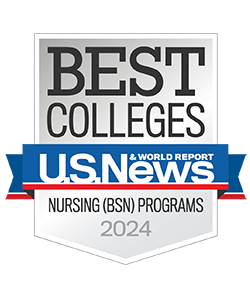Simulations take holistic approach to emergency response


Disasters can never be predicted, but a multipronged simulation event at Cizik School of Nursing prepared undergraduate students to respond to many emergencies and disasters.
More than 120 Bachelor of Science in Nursing (BSN) students learned about and practiced responding to a range of scenarios on July 12 and 13 during the “Safety. Awareness. First Aid. Emergency Response (SAFER)” community event as part of their community health nursing clinical course.
Between the 8 a.m. prebrief and 4 p.m. debrief, students practiced physical and psychological first aid, CPR/AED skills, mass casualty search and triage, and active shooter response. They also completed “Stop the Bleed” training and certification. Teaching moments were woven into scenarios involving a hurricane response in a long-term care facility, an explosion in the community, and a concert event gone awry.
“The goal of this event was to give our students confidence in their ability to respond to emergencies, to stress the importance of putting their safety first, and to help them understand and accept that they won’t always be able to help everyone,” said Associate Professor Sandra Branson, PhD, RN, who organized the drill. “This is the first time we have staged a day-long, comprehensive simulation like this for all community clinical students, and we are not aware of any other nursing schools taking this holistic, multifaceted approach.”
The Simulation and Clinical Performance Laboratory (Sim Lab) buzzed with chaos as two groups of more than 60 students participated each day. Students volunteered to serve as simulated victims. Sergeant Scott Barnwell, in Special Operations of The University of Texas Police Department at Houston, was the incident commander and led the active shooter training, while nursing school faculty, simulation staff, and Dr. Branson’s community clinical students taught other sections.
Multiple individuals played instrumental roles in the development and execution of the simulation experience including instructors D’Hania L. Miller, MS, BSN, and Davida L. Chatman, MSN-ED, CPEN, CPN, and Clinical Nurse Educator Dionne J. Walker, MSN, RNC-OB, Dr. Branson’s ten community clinical students, simulation technician Glenn de la Peña, and Sheryl L Malone-Thomas, DNP, RN, FNP-BC.
“The nursing process you have learned prepares you well for emergency response,” Instructor Paige Owen, MSN, RN, told students. “We hope you never find yourself in this kind of situation, but if you do, you will know how to take on a leadership role if needed.”


